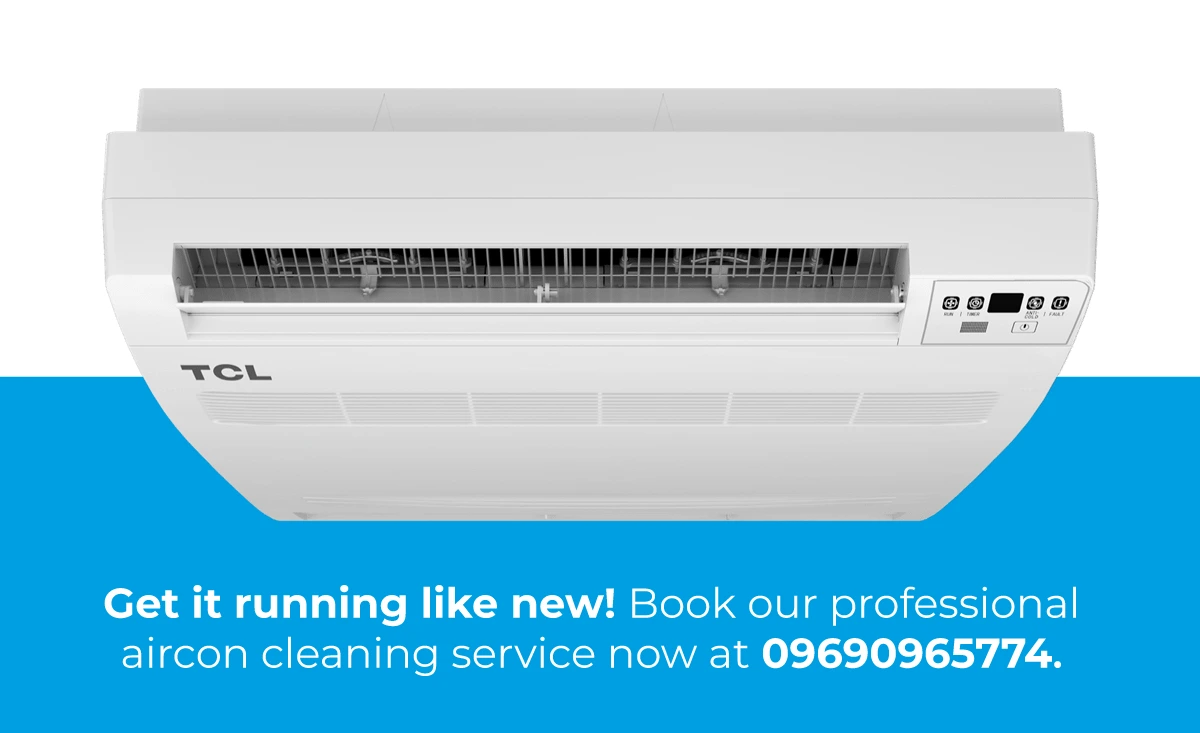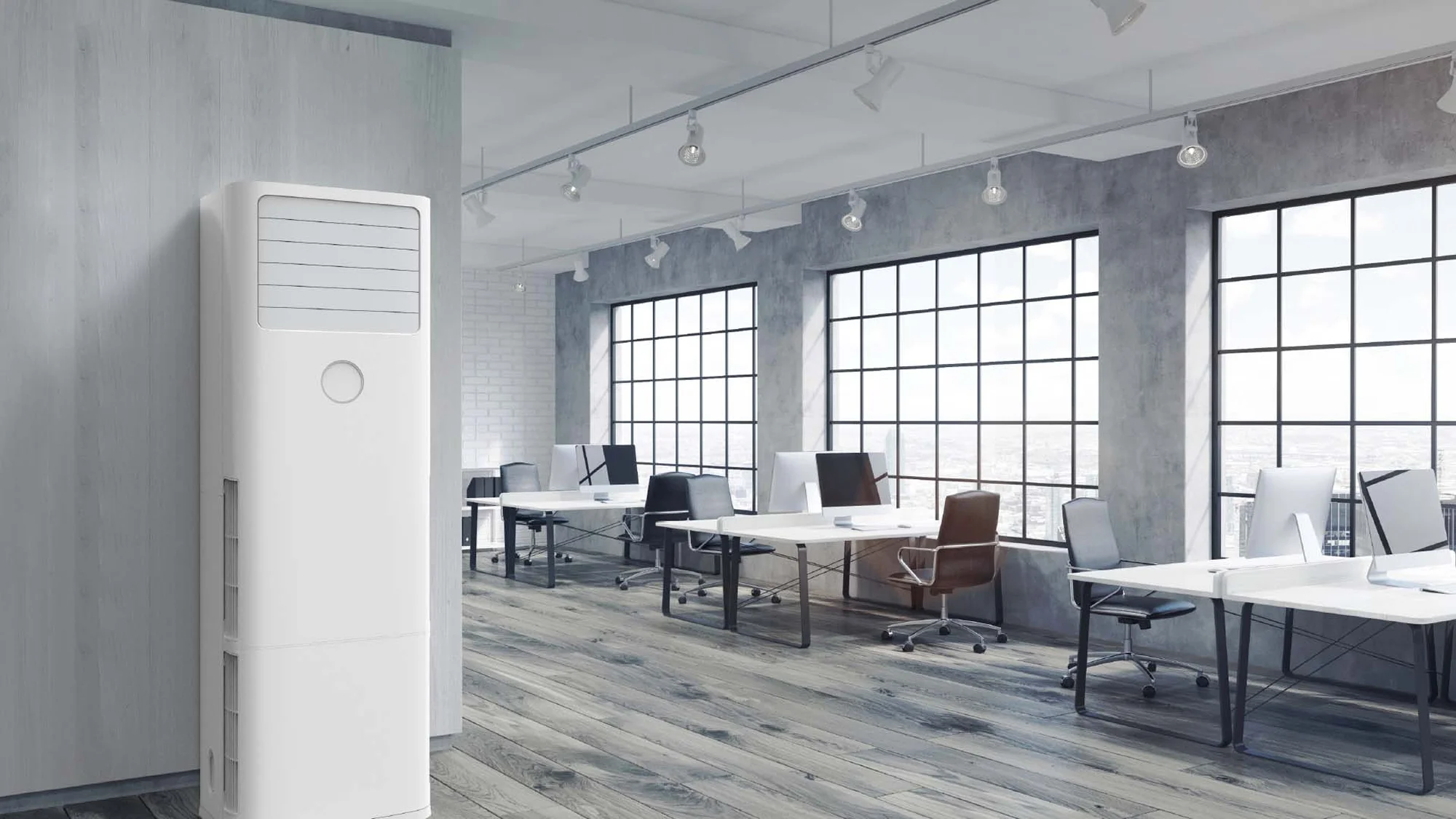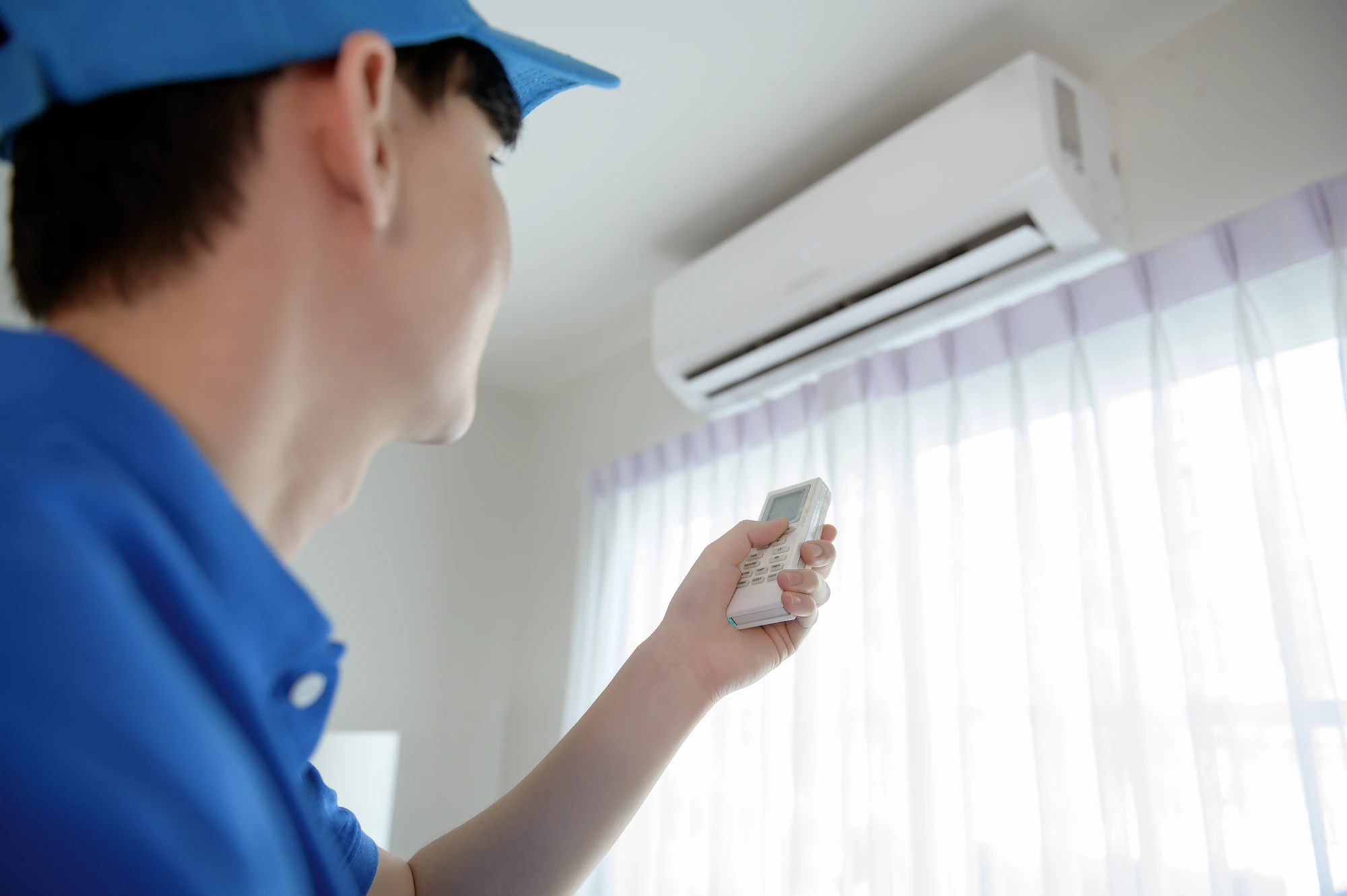In the tropical climate of the Philippines, a reliable air conditioning system is not just a luxury—it’s a necessity. While many are familiar with window and split-type AC units, larger commercial and residential spaces often require a more robust and discreet cooling solution. This is where the suspended-type air conditioner comes into play. Also known as a ceiling-mounted or under-ceiling unit, this type of aircon is designed for powerful performance in wide-open areas without occupying floor or wall space.
This comprehensive guide will walk you through everything you need to know about suspended-type air conditioners. We’ll explore their unique design, key advantages, and essential maintenance requirements. By the end, you’ll understand why these units are a top choice for many businesses and large homes, and how professional aircon cleaning is critical to ensuring their longevity and efficiency.
What is a Suspended-Type Aircon?

A suspended-type air conditioner is a type of split-system AC where the indoor unit is mounted directly to the ceiling. Unlike a cassette-type unit that is recessed into the ceiling, a suspended unit hangs visibly from the ceiling, distributing cool air across a wide area. This design makes it a versatile cooling solution for spaces with high ceilings or where wall and floor space is limited.
The system is split into two main components: the indoor unit, which contains the evaporator and fan, and an outdoor unit (condenser) that houses the compressor. The two units are connected by refrigerant lines and electrical wiring, allowing the indoor unit to operate with minimal noise while the heat is expelled outside. The indoor unit’s powerful fan and strategic placement allow it to push cooled air across a large room, making it highly effective for cooling commercial spaces like restaurants, retail stores, and open-plan offices.
Advantages of a Suspended-Type Aircon
The suspended-type aircon is a powerful solution, offering several key advantages that make it an ideal choice for specific environments.
1. Powerful and Wide Airflow
The primary advantage of a suspended unit is its ability to deliver powerful and wide-reaching airflow. Because the unit is mounted on the ceiling, it can circulate cooled air across a broad area, ensuring uniform cooling in large, open spaces. This is a significant benefit for places like gymnasiums, large halls, and restaurants where a consistent temperature is crucial for comfort.
2. Saves Floor and Wall Space
For businesses and homes where every square foot counts, a suspended aircon is an excellent space-saving solution. It doesn’t take up any floor space and keeps walls free for decor, furniture, or other fixtures. This design flexibility makes it a popular choice for retail stores and offices where maximizing usable space is a priority.
3. Quiet Operation
Similar to other split-type units, the noisiest components—the compressor and condenser—are located in the outdoor unit. This allows the indoor unit to operate quietly, which is a major advantage for commercial spaces like libraries, meeting rooms, and stores where a peaceful atmosphere is essential for customers and employees.
4. Easy to Access for Maintenance
Unlike a cassette unit that is hidden within the ceiling, a suspended aircon is easy to access for cleaning and maintenance. The filters and other internal components are located behind a front panel that can be easily opened, allowing for straightforward cleaning and servicing. This accessibility can help reduce maintenance time and costs.
Disadvantages of a Suspended-Type Aircon
While a suspended aircon is a great option for many, it’s not without its drawbacks. Considering these points is crucial before deciding on a purchase.
1. High Initial Cost
The upfront cost of a suspended-type air conditioner is generally higher than both window-type and standard split-type units. The specialized design and installation complexity contribute to this higher price. While the long-term energy savings often justify this cost, it can be a significant barrier for some.
2. Professional Installation Required
Installation of a suspended-type AC requires a professional with specific expertise. The process involves securely mounting the heavy indoor unit to the ceiling, proper wiring, and managing the refrigerant lines and drainage system. A poor installation can lead to refrigerant leaks, reduced efficiency, and other operational problems.
3. Can Be a Visual Intrusion
While it saves floor and wall space, a suspended unit is still a visible component in a room, hanging from the ceiling. For spaces with a minimalist or sleek aesthetic, a suspended unit might not be the most visually appealing choice compared to a discreet cassette unit.
The Importance of Regular Aircon Maintenance
Regular maintenance is non-negotiable for a suspended-type aircon. Due to its powerful airflow, it tends to pull in a significant amount of dust and debris, which can accumulate on the internal components. Neglecting professional maintenance can lead to a host of problems, including reduced energy efficiency, a drop in air quality, and potential breakdowns.
How Often Should You Clean It?
The frequency of cleaning depends on its use and environment.
- For the air filter: The air filter, located behind the front panel, should be cleaned every two to four weeks. A clogged filter restricts airflow, forcing the unit to work harder and consume more energy.
- For a professional cleaning: A full, professional cleaning should be performed at least once a year. For commercial spaces with heavy usage or in high-dust environments, a cleaning every four to six months is highly recommended to prevent mold buildup and maintain efficiency.
A Step-by-Step Guide to Basic DIY Cleaning
While a professional deep clean is essential, you can perform some simple maintenance to keep your suspended-type unit in good shape between visits.
Step 1: Turn off the Power. Always start by turning off the unit and unplugging it from the power source to prevent any accidents.
Step 2: Clean the Air Filter. Open the front grille of the indoor unit to access the air filters. Carefully remove them and wash them with warm water and a mild detergent. Let them dry completely before placing them back.
Step 3: Wipe Down the Unit. Use a soft, damp cloth to gently wipe down the exterior of the indoor unit and the vents. This removes any surface dust and grime.
When to Call in the Professionals
A DIY cleaning is a good habit, but it’s not enough to maintain a suspended aircon. The internal components—such as the fan, evaporator coils, and drain pan—are tucked away inside the unit, making them difficult to access. Over time, these parts accumulate stubborn dirt, mold, and mildew, which can seriously affect air quality and cooling efficiency.
Professional cleaners use specialized tools and solutions to perform a deep, thorough clean of every component. They can also identify and fix minor issues before they become major, costly repairs. A professional cleaning not only extends the life of your unit but also ensures that the air circulating in your space is clean, healthy, and safe for everyone.
No Time to Clean? Cleaning Services PH is Here to Help.
We know that a busy schedule can make it difficult to find the time for proper aircon maintenance. At Cleaning Services PH, we understand the importance of a clean and efficient air conditioner for your family’s health and comfort.
Our team of professionally trained technicians is skilled in handling all types and brands of air conditioning units, including complex suspended systems. We use the latest equipment and techniques to deliver a deep, thorough clean that a simple DIY job can’t match. We’ll handle the dirt and grime, so you can enjoy a healthier, more comfortable home or business.
Don’t let a dirty aircon compromise your family’s health or your unit’s performance. Book a professional aircon cleaning service with Cleaning Services PH today. Call us at 09690965774 or email us at hello@cleaningservices.ph.




